The content of the article
The fashion for proper nutrition and maintaining a healthy lifestyle is gaining popularity. People strive to be beautiful, slender, fit. And in winter, when a lack of vitamins affects the health and condition of the skin and hair, more and more questions arise about how to make up for this deficiency? Where to get nutritious foods that can replace vegetables and fruits? The only answer is sprouted wheat. It contains a huge amount of minerals and vitamins that can support the body during vitamin deficiency. In addition, the sprouted wheat has a delicate taste, which adds special piquancy to dishes with this ingredient. Sprouted wheat is added to salads, hot dishes and even desserts are prepared from it. What are the benefits to the body of wheat germ? How to germinate grains and how to consume them? Let's try to figure everything out in order.
How germinated wheat affects the human body
Sprouted wheat has a lot of calcium, phosphorus, iron, iodine and magnesium. Wheat consists of a huge amount of fiber and carbohydrates. In its composition you can find vitamins B, C, D, PP. What is noteworthy, the grains themselves are not so rich in vitamins. All useful substances begin to become active precisely when young shoots appear. But how does germinated wheat affect the human body?
- A large amount of calcium is good for women. Regular consumption of wheat germ strengthens the hair - makes it smooth and silky. Nails become stronger and harder, and the bones are denser.
- Germinated wheat affects the digestive tract. At the first time after the start of the use of germinated seeds, a person may develop bloating, increased gas formation, constipation or diarrhea. The fact is that in wheat there is a lot of fiber, which, getting into the stomach and intestines, absorbs all toxins and wastes. Over time, the work of the gastrointestinal tract is invariably getting better, the body is cleansed, the immunity strengthens.
- Sprouted wheat is often recommended for people suffering from various psychological disorders. Wheat nutrients relieve stress, reduce the risk of depression, and make a person more stress-resistant.
- Sprouted wheat has a lot of magnesium, which enriches the blood with oxygen. This helps to lower blood pressure, lowers cholesterol in the body.
- Wheat sprouts are very effective for anemia. They contain twice as much iron as meat.
- Sprouted wheat iodine protects the body from thyroid disease.
- Despite all the nutritional value of the product, it has very few calories. Germinated wheat accelerates metabolic processes, which allows you to use it during weight loss.
These and many other beneficial properties of wheat germ make it an indispensable source of vitamins. That is why in the old days wheat was germinated as a medicine for many diseases. Today, we can grow such a medicine at home.
How to germinate wheat
This process is simple, however, requires the implementation of some important subtleties.
- First you need to choose wheat for germination. It can be bought at specialized nutrition stores or at a gardener store. Plain wheat from the supermarket may not be suitable. If wheat grains were thermally processed, they lose their germination.
- Grains should be of high quality - without chips, damage, wormholes. They must be thoroughly washed and transferred to a glass dish.Pour the wheat grains with a little warm water so that the liquid covers them by 3 centimeters. Cover the dishes with a cotton cloth or gauze and leave for 8-10 hours. It is convenient to soak the wheat overnight.
- In the morning, rinse the grains carefully under running water. Take a deep plate with a wide bottom and spread a wet cloth on it. Then put the washed wheat grains on the fabric and cover with the corners of the napkin. Wheat grains should always be kept in a warm and humid place.
- After 10 hours, sprouts will start to hatch from the grains.
At first, only a few grains will sprout, however, a little patience and after a few days each kernel will hatch.
How to consume germinated wheat
To get real benefits for the body, you need to eat wheat in the amount of one tablespoon 2-3 times a day. It can be eaten simply as a snack or made from wheat salad. Wheat sprouts can not be heated, fried or baked - at high temperature they lose their healing properties. Wheat can also be a great side dish for meat or fish.
Many people wonder - do you need to cut the grains themselves and are there only sprouts? No, you do not need to cut the grown sprouts. Eat whole wheat to get the most out of this product. If you soak too much wheat, you can keep it in the refrigerator for two to three days. Just put the bowl on the shelf of the refrigerator and wheat growth will stop.
It is believed that it is better to eat sprouted wheat when it was just starting to germinate. Sprouts longer than two centimeters are less useful. To get really visible benefits for the body, the sprouts need to eat at least two consecutive months. But then you can boast of good health and strong immunity.
Who should not eat sprouted wheat
Like any medicine and product, wheat has contraindications. Sprouted wheat should not be eaten by adults and children with an allergy to gluten. In addition, wheat germ is not recommended for people with peptic ulcer. Wheat should not be consumed with milk and honey - in combination with these products, a person may experience bloating, flatulence and severe gas formation.
Remember, even if you do not have a food allergy, a new product should be introduced gradually. Start eating half a teaspoon of wheat sprouts, gradually increasing the dose.
What to cook from wheat
Given that you need to eat wheat for quite some time (about two months), boring eating can be replaced with bold experiments. Moreover, dishes with germinated wheat are very tasty!
- Salads. This is the most popular way to consume wheat germ. Use any seasonal vegetables and fruits, nuts, cheese for salads. If you have taken the path of proper nutrition, refuse to dressing salads with mayonnaise in favor of yogurt and lemon juice. Salads with sprouted wheat are unusual and low-calorie.
- Bread. Sprouted wheat is added to home-made bread. This gives the flour product a special taste and unusual aroma. Germinated wheat is slightly dried and ground in a blender or meat grinder. Then add the chopped sprouts to the rest of the dough. In addition to wheat, spices and dried fruits can be added to the bread for an unusual taste.
- Sumalyak. In the east, from the sprouted seeds of wheat, from time immemorial they have been preparing the traditional sumalak dish. Germinated wheat, along with cottonseed oil and flour, is simmered for about a day. The cooking process is combined with the celebration of the onset of spring. The result is a delicious pasta, very thick and incredibly healthy. Sumalyak is considered a traditional dessert of the Turkic peoples.
- Muesli. Sprouted wheat is a wonderful breakfast that will fill you with energy and strength until the next meal. Mix the sprouted grains of wheat with nuts, chopped fruit, kefir and nuts to get a gourmet and nutritious breakfast.
- Milk. Of particular nutritional value is the juice of sprouted sprouts, which, in consistency and color, is similar to milk. Such milk is given to people after a serious illness in order to restore the patient’s strength and quickly bring him back to life.
These and other recipes suggest the use of wheat germ in various forms. But do not heat the sprouts to maintain the maximum of their beneficial properties.
Mention of sprouted wheat can be found in ancient records. There is a legend about a besieged fortress. People were very hungry and could not fight the enemy. To satisfy their hunger, they poured the remains of sprouted wheat from the bags and prepared porridge (subsequently sumalak) from it. Satisfying the hunger, the soldiers received an incredible surge of vigor and strength, which helped them repel the siege of the enemy. So sprouted wheat has become a symbol of power and vitality.
Video: How to Eat Sprouted Wheat

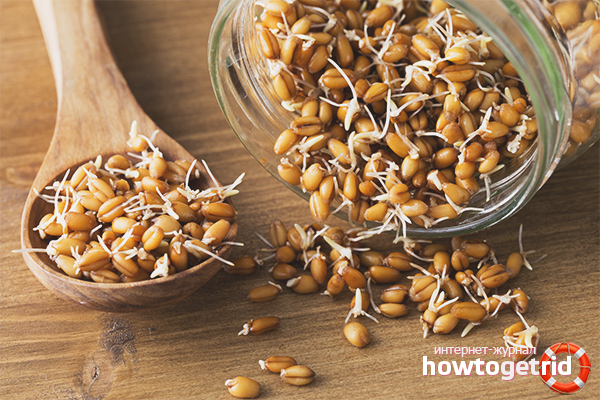
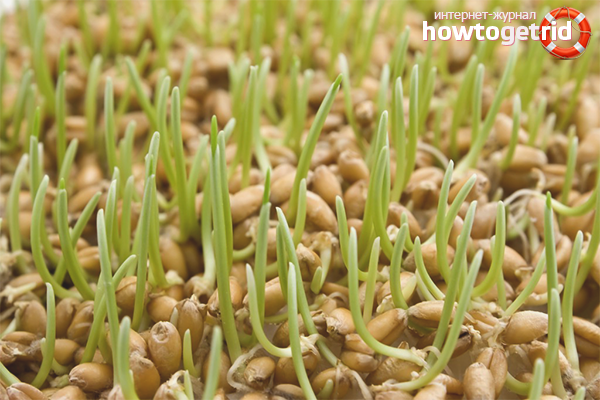
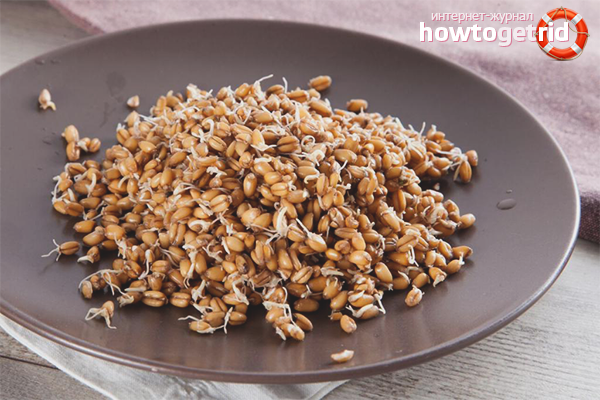

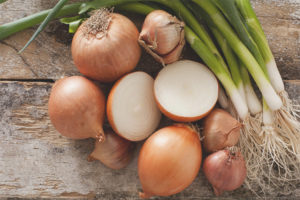
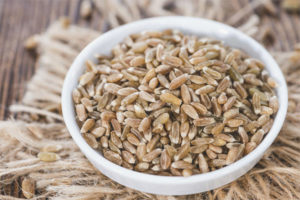
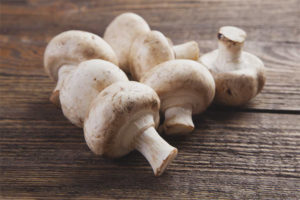
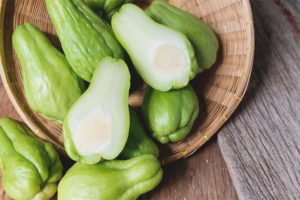



Submit
During heat treatment, wheat seedlings lose their healing properties, and here are placed recipes for bread, an oriental dish where you can not do without it. The meaning is lost, why is this necessary?